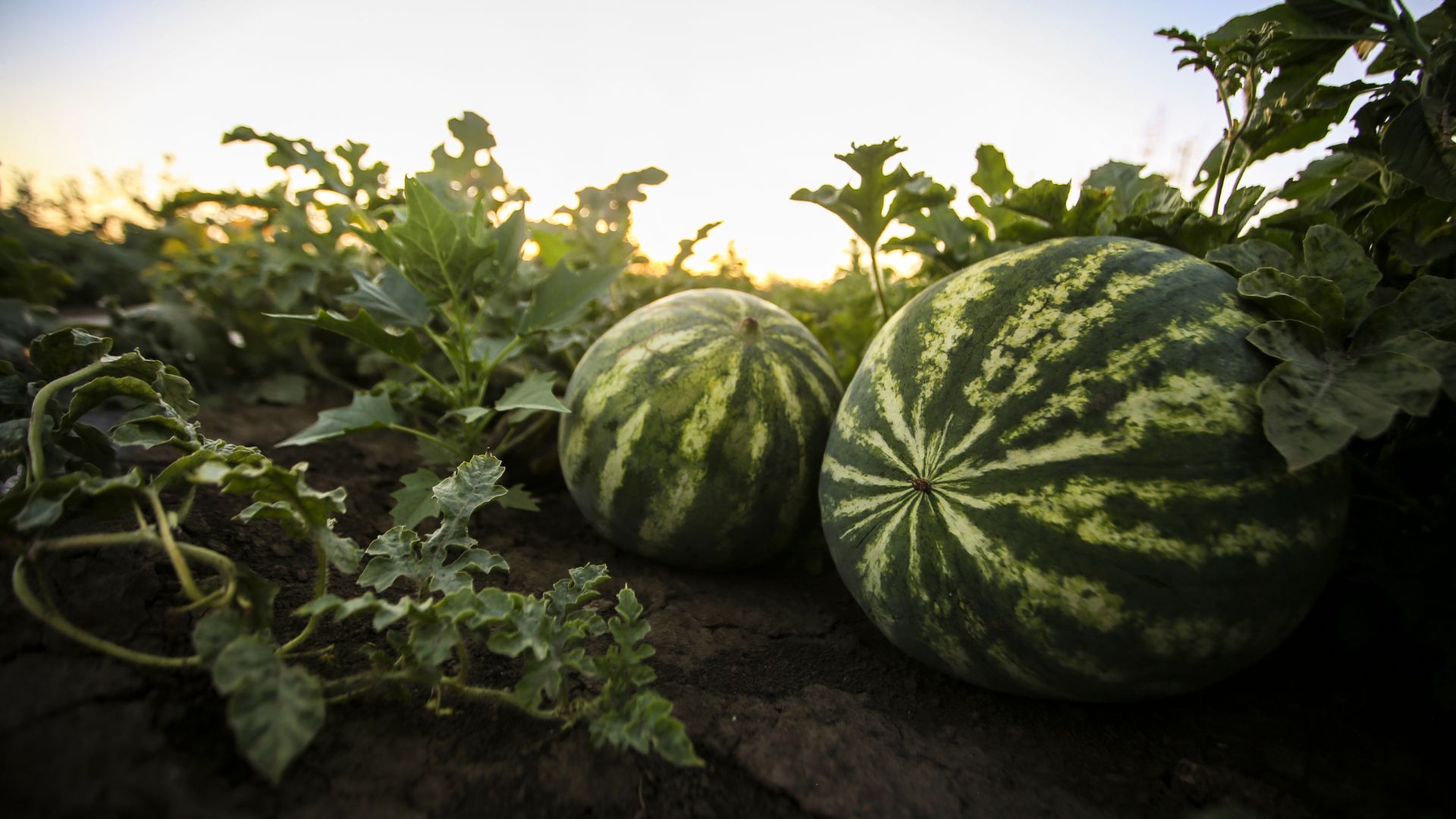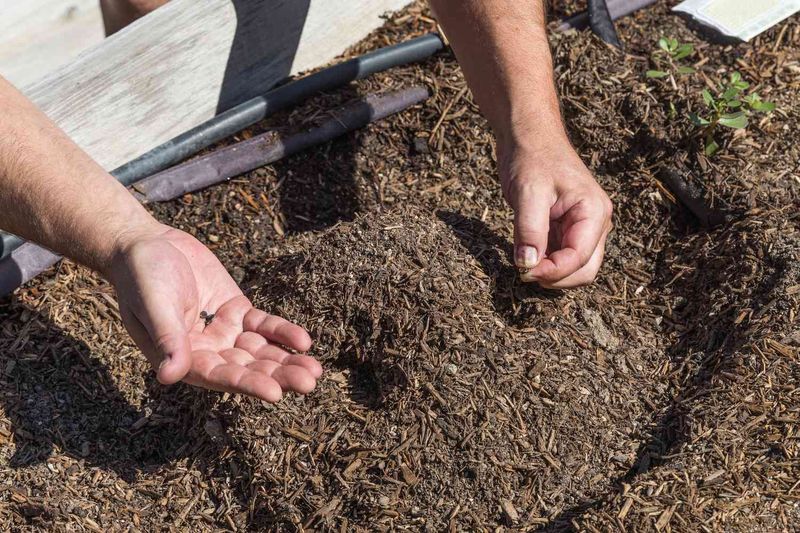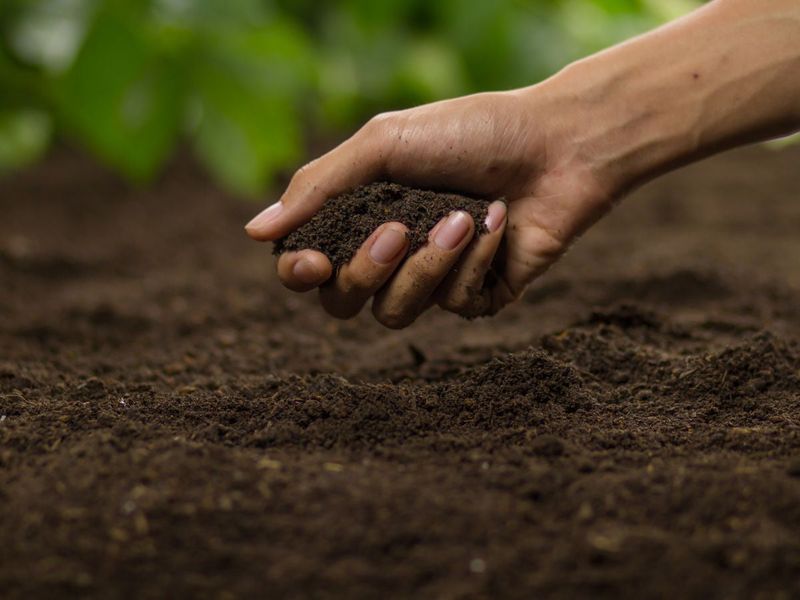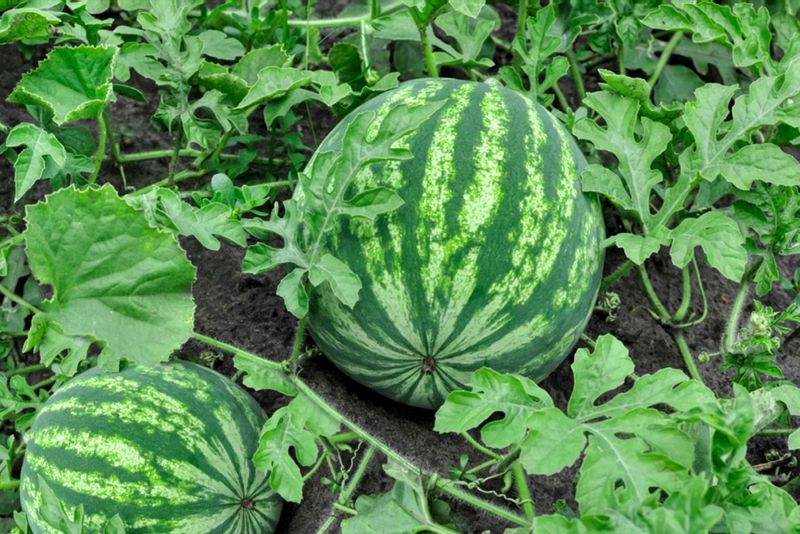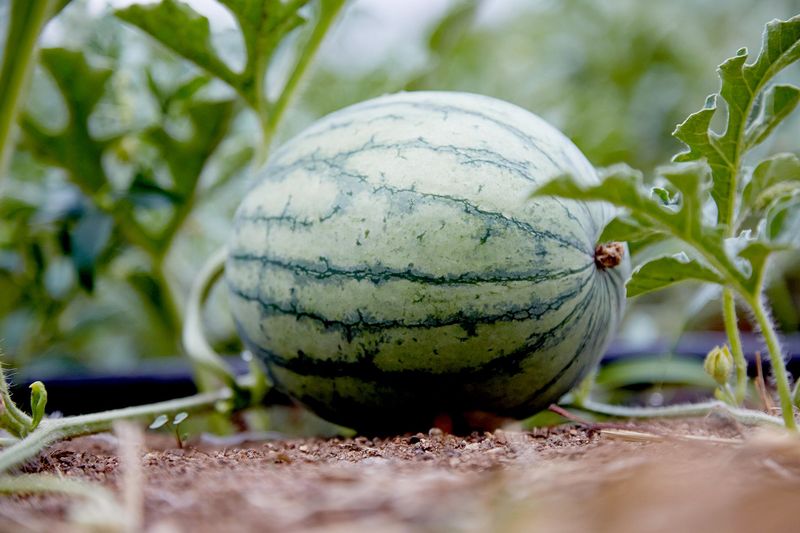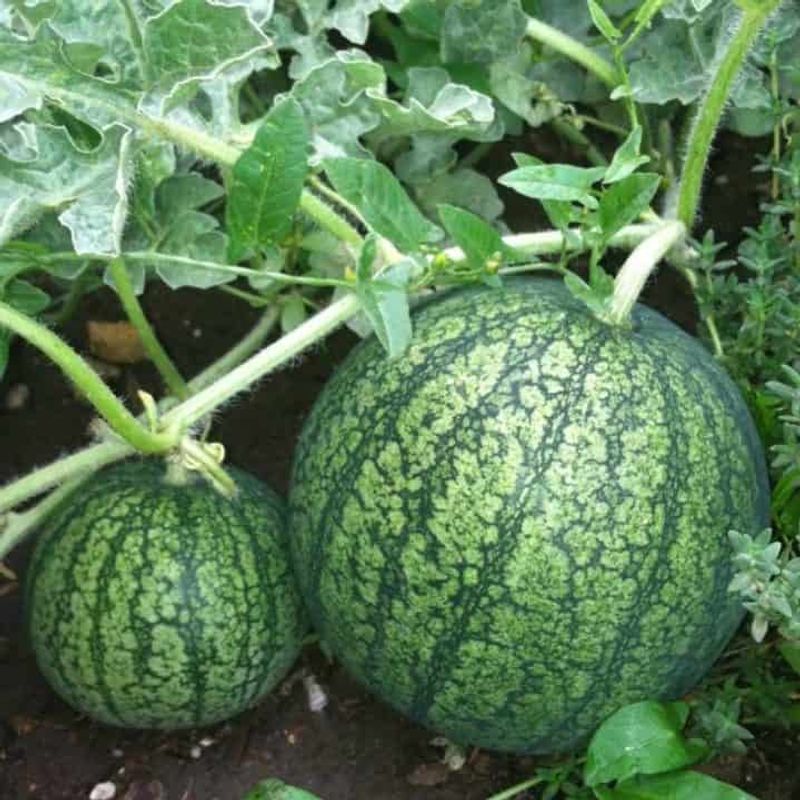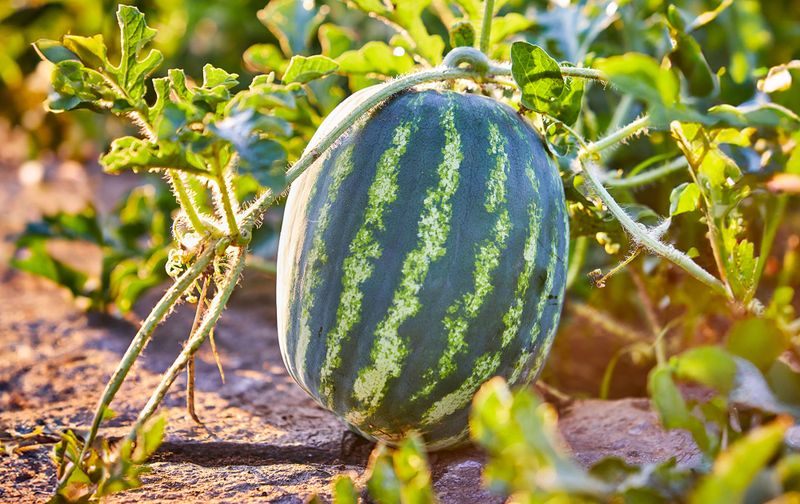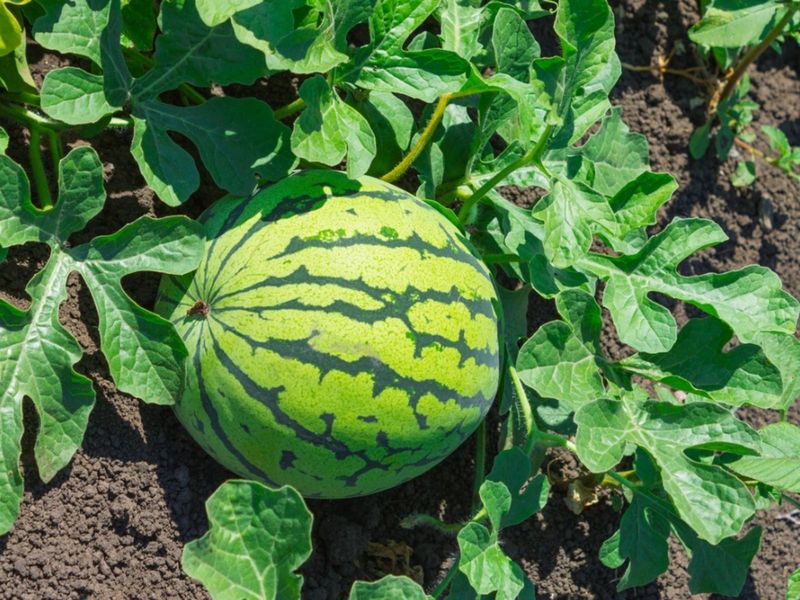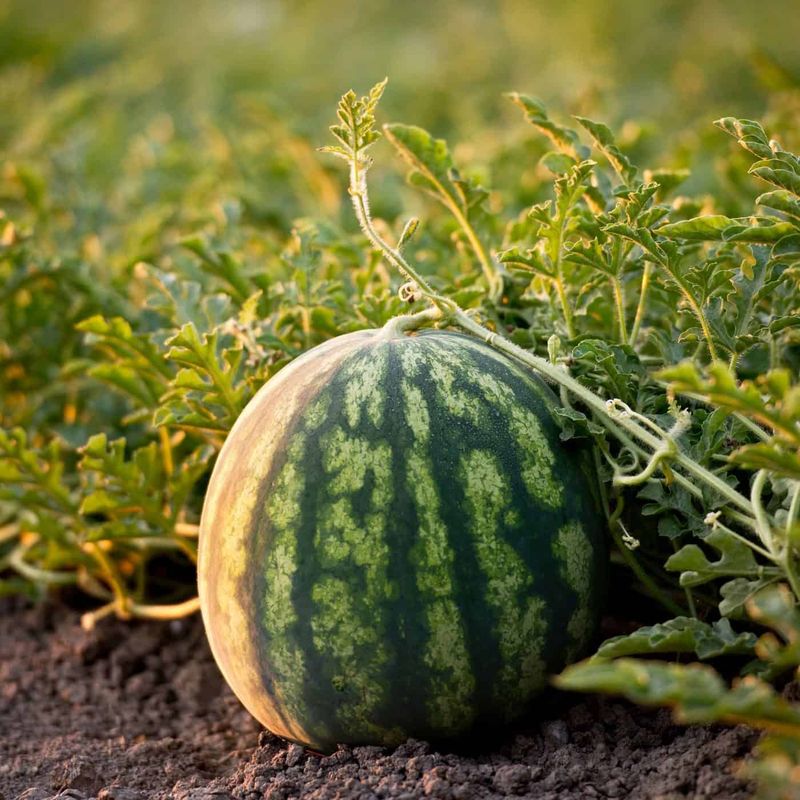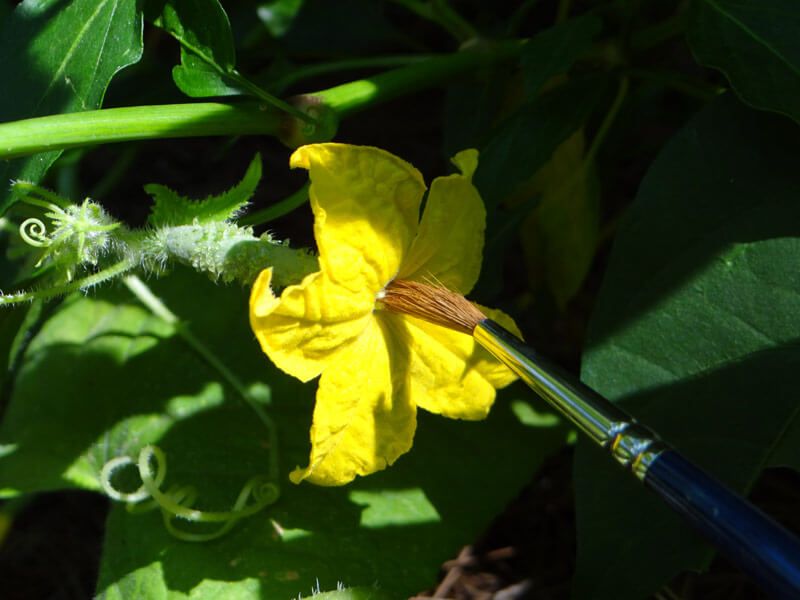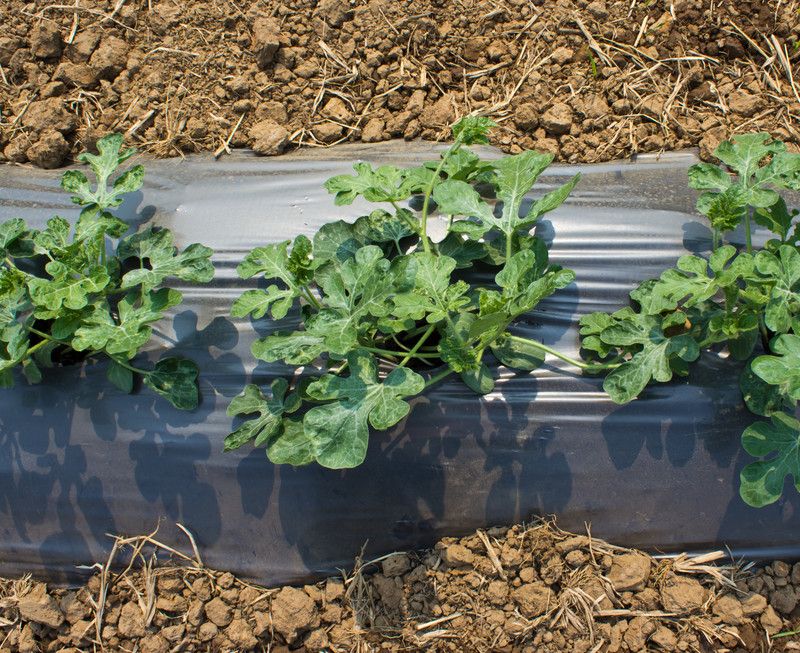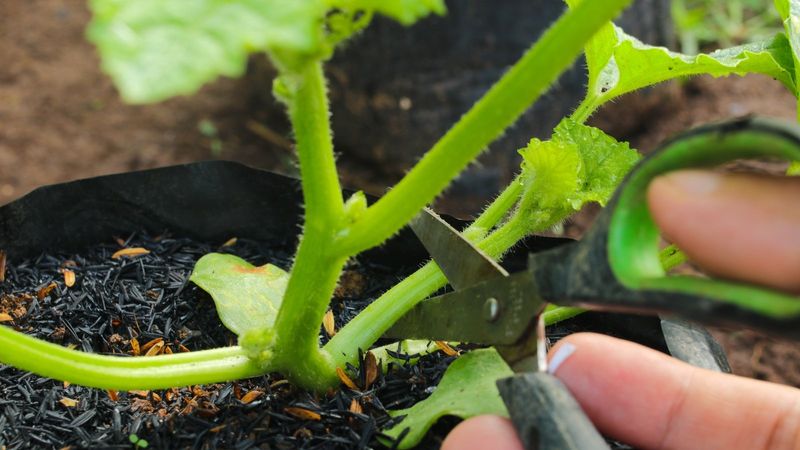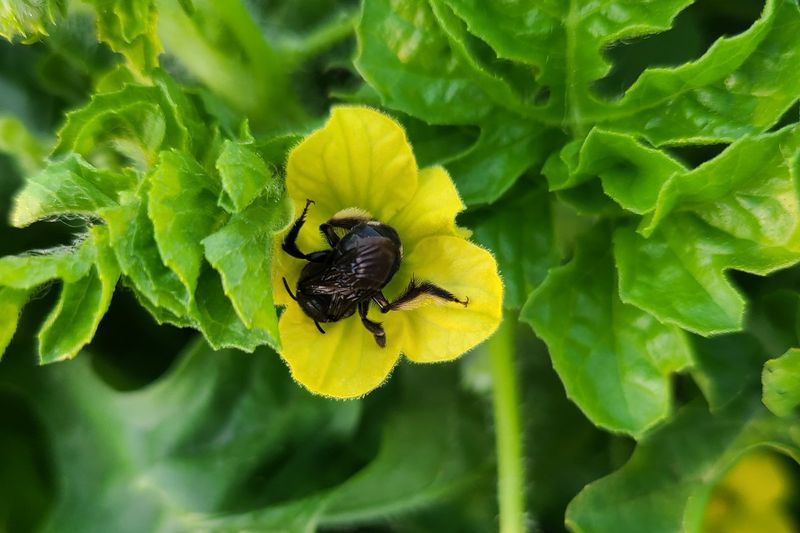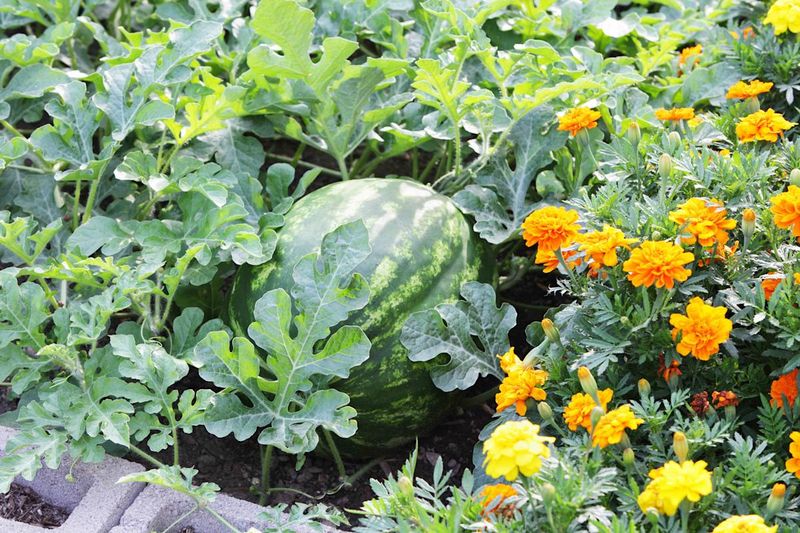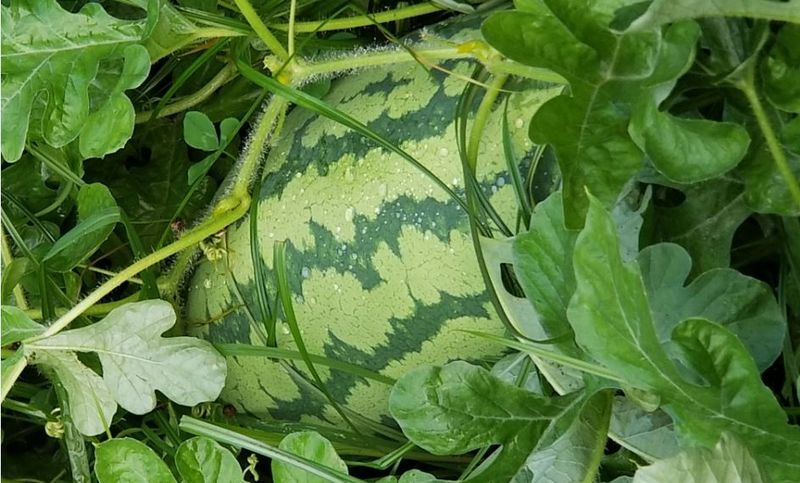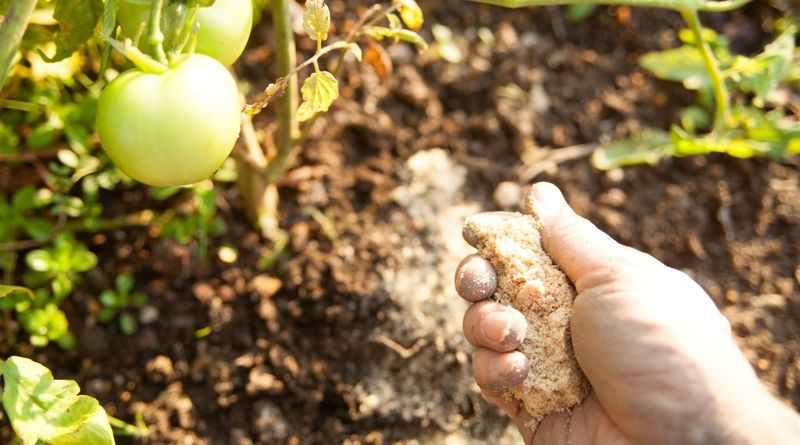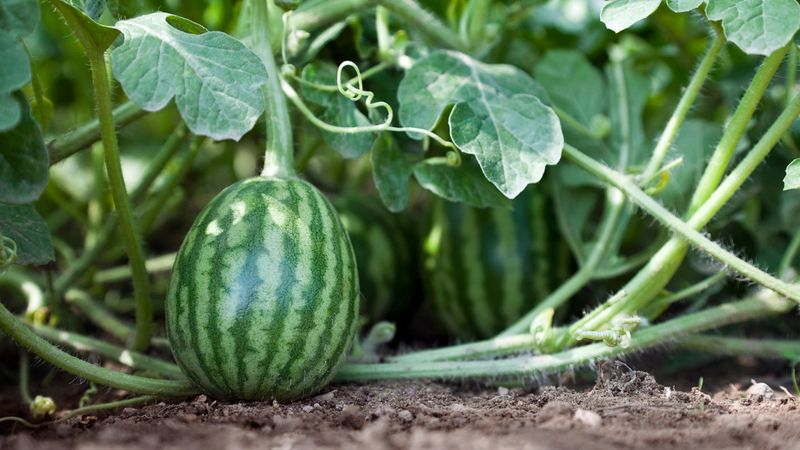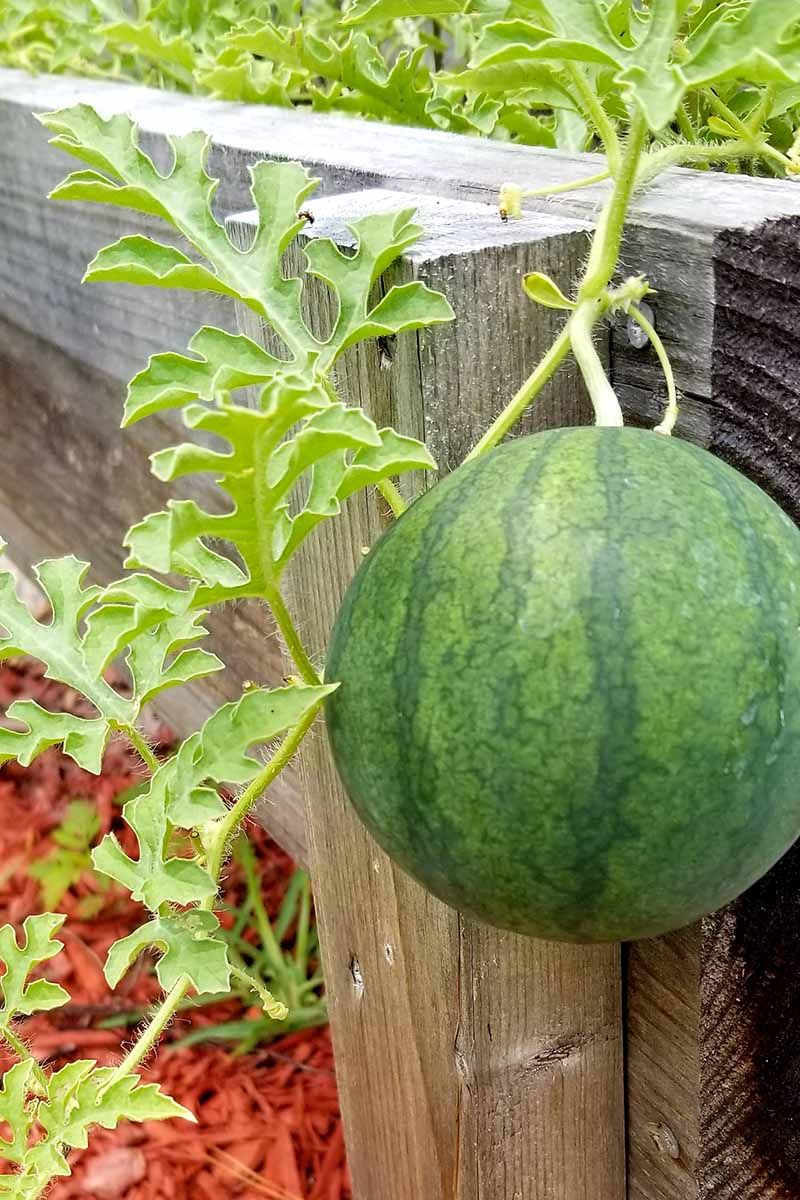Have you ever dreamed of growing a watermelon so big it turns heads—or maybe even wins a blue ribbon at the county fair? I definitely have, and let me tell you, it’s one of the most fun (and rewarding) gardening challenges out there.
Growing a giant watermelon isn’t just about luck—it takes the right techniques, a bit of patience, and a whole lot of enthusiasm.
Whether you’re out to impress the neighbors or just want to see how big you can go, I’ve rounded up 15 tried-and-true tips from growers who’ve done it, plus 3 common mistakes you’ll want to steer clear of.
1. Start With Champion Seeds
Many gardeners make the mistake of using any watermelon seeds they have on hand. For truly massive fruit, you need varieties specifically bred for size like Carolina Cross, Atlantic Giant, or Jubilee. These specialized seeds carry genetic potential for enormous growth that regular varieties simply don’t possess.
Store-bought watermelon seeds rarely perform well for size competitions. Quality seeds from reputable suppliers cost more but dramatically increase your chances of success. The genetic difference can mean hundreds of pounds in your final harvest weight.
Each seed contains a blueprint for your future giant. Handle them with care during germination by pre-sprouting between moist paper towels at 85°F before planting. This extra step ensures only the strongest seedlings make it into your garden beds.
2. Prepare Rich, Sandy Loam Soil
Sandy loam creates the perfect foundation for monster watermelons to thrive. The ideal growing medium combines excellent drainage with water retention capabilities and plenty of organic matter, giving roots the perfect balance they need to support massive fruit development.
Work in aged compost, well-rotted manure, and a bit of sand if your soil tends toward clay. Test your soil pH and aim for 6.0-6.8, slightly acidic but not too much. Watermelons struggle in compacted soil, so deep tilling to at least 12 inches before planting allows those aggressive roots to expand freely.
Raised beds warm up faster in spring and provide better drainage during summer downpours. Building mounds 8-12 inches high and 3 feet wide gives each plant its own personal growing hill that heats up quickly and sheds excess water during heavy rains.
3. Give Plants Plenty Of Space
Record-breaking watermelons need room to stretch out. Commercial growers might plant watermelons 3 feet apart, but for giants, you’ll need 8-10 feet between plants. This spacing allows the extensive root system and sprawling vines to access maximum nutrients without competition.
Each plant can produce vines stretching 15-20 feet in all directions. When vines intertwine and crowd each other, they compete for sunlight and soil resources, limiting fruit size. Proper spacing also improves air circulation, reducing fungal disease problems that can stunt growth or kill plants.
Map out your garden before planting day. A single plant needs at least 100 square feet of dedicated growing space to reach its maximum potential. This generous allowance might seem excessive, but the extra room directly translates to bigger melons when harvest time arrives.
4. Implement Strategic Watering
Morning is the golden hour for watering your future champions. Early watering gives plants time to dry before evening, preventing fungal diseases that thrive in damp overnight conditions. During early growth stages, consistent moisture encourages strong root and vine development.
Deep, infrequent watering forces roots to grow downward in search of moisture. Aim for about 1-2 inches of water weekly, adjusting based on rainfall and temperature. Drip irrigation delivers water directly to the root zone without wetting foliage, reducing disease risk while conserving water.
As fruits begin to form, gradually reduce watering frequency but increase volume per session. During the final two weeks before harvest, cut back watering significantly to concentrate sugars and improve flavor. A soil moisture meter takes the guesswork out of knowing when to water.
5. Master The Art Of Fertilization
Young watermelon plants benefit from nitrogen-rich fertilizers that fuel leafy growth and establish strong vines. A balanced 10-10-10 fertilizer works well during the initial growing phase. Once the plants begin flowering, their nutritional needs shift dramatically.
Switch to a fertilizer higher in phosphorus and potassium (like 5-10-15) when flowers appear. These nutrients support fruit development rather than continuing to push vine growth. Applying fertilizer too close to the main stem can burn roots, so keep it 6-8 inches away from the plant base.
Many championship growers supplement with foliar sprays containing micronutrients like calcium, magnesium, and boron. Apply these sprays early in the morning or late evening when leaves can absorb nutrients most efficiently.
6. Focus On Single Fruit Production
Commercial farmers want multiple watermelons per vine, but giant growers know the secret: one vine, one watermelon. When a vine supports multiple fruits, it divides its energy and nutrients, limiting the potential size of each melon.
After your plants develop several healthy female flowers (identified by the tiny watermelon shape at the base of the blossom), choose the strongest-looking one on the main vine. Pinch off all other female flowers and developing fruits, allowing the plant to direct all its energy to your chosen champion.
Monitor your selected fruit daily for the first few weeks. If it shows any signs of disease, damage, or irregular growth, you may need to select another fruit as your primary focus. This selective approach can mean the difference between a 30-pound watermelon and a 100-pound behemoth.
7. Support Growing Fruit Properly
Once your chosen watermelon reaches softball size, place a piece of plywood or cardboard underneath it. This platform prevents direct soil contact that can cause rot and provides an even surface that reduces the risk of misshapen growth or cracking.
Gently rotate your developing watermelon every few days to encourage uniform growth. Be extremely careful when handling the fruit – even small cracks or stem damage can halt growth or introduce disease. Wear cotton gloves to prevent oils from your skin transferring to the melon’s surface.
Some champion growers create custom mesh slings to support extremely large watermelons as they grow. For melons approaching record size, this extra support becomes increasingly important as the fruit gains pounds daily.
8. Protect Vines From Damage
Healthy vines act as lifelines to your developing watermelon, delivering water and nutrients essential for growth. Creating pathways between rows using straw or wood chips allows you to move through your garden without crushing vital vines. Even minor vine damage can significantly reduce the fruit’s final size.
Train secondary vines away from your main fruit to prevent crowding and improve air circulation. Use garden stakes or flags to mark the location of primary vines so you don’t accidentally step on them during maintenance.
Keep garden tools clean and sharp when pruning or trimming vines to prevent disease transmission. Many growers cover their vines with lightweight row cover during early growth to protect against insect damage and cold nights. Healthy, undamaged vines can transport more nutrients.
9. Time Planting For Maximum Growing Season
Patience pays off when planting watermelons. Wait until soil temperatures reach at least 70°F at a 4-inch depth before planting seeds or transplants. Cold soil stunts growth and can permanently affect the plant’s productivity, regardless of later care.
Starting seeds indoors 3-4 weeks before your last frost date gives plants a head start without risking cold damage. Use biodegradable pots to prevent root disturbance during transplanting. Hardening off seedlings by gradually exposing them to outdoor conditions prevents transplant shock.
Calculate your growing season backward from your first expected fall frost. In shorter-season climates, choose faster-maturing varieties or use black plastic mulch to warm soil and extend your growing window.
10. Hand-Pollinate For Guaranteed Fruit Set
Natural pollinators like bees do a great job, but champion growers take no chances. For guaranteed pollination, transfer pollen yourself using a small artist’s paintbrush during mid-morning hours when flowers are fully open.
Gently collect pollen from several male flowers by touching the brush to the center stamen. Then carefully brush this pollen onto the stigma in the center of female flowers. Each female flower remains receptive for only one day, so check your plants daily during the flowering period.
Hand-pollination also allows you to control which flowers become fruit. Select female flowers on the main vine about 8-10 feet from the plant base for optimal nutrient flow. Successful pollination results in the tiny watermelon beginning to swell within days, while unpollinated flowers simply wither and drop off.
11. Use Black Plastic Mulch
Laying this material down two weeks before planting pre-warms the soil and gives your plants a significant head start, especially in cooler climates. The dark surface absorbs sunlight and raises soil temperature by 5-10 degrees.
Beyond warming the soil, black plastic prevents weeds that would compete with your watermelons for nutrients and water. The plastic helps maintain consistent soil moisture by preventing evaporation.
Install drip irrigation under the plastic before securing it for efficient watering directly to the root zone. Cut X-shaped slits in the plastic for planting. For the most professional setup, use UV-resistant agricultural plastic rather than standard black trash bags, as it will last the entire growing season without breaking down.
12. Prune Secondary Vines Strategically
Secondary vines draw precious energy away from your main fruit-bearing vine. Once your primary vine reaches about 10-12 feet long, pinch off the growing tip to halt its extension. This redirects the plant’s energy to fruit development rather than continuous vine growth.
Limit each plant to 3-4 secondary vines, removing others as they emerge. These remaining secondary vines provide enough leaves for photosynthesis without overtaxing the plant’s resources. Position these vines so they don’t shade each other, maximizing sun exposure for every leaf.
Maintain the leaves closest to your developing watermelon with extra care. These nearby leaves contribute the most sugar to your growing fruit. Remove any yellowing, diseased, or damaged leaves immediately, as they drain resources without contributing to growth.
13. Monitor And Manage Pests Naturally
Yellow sticky traps placed around your garden help monitor insect populations before they become problematic. These simple tools alert you to increasing pest pressure, allowing for early intervention before your plants suffer damage. Early detection makes organic control methods much more effective.
Beneficial insects like ladybugs and lacewings naturally control aphids and other soft-bodied pests. Attract these helpers by planting small-flowered herbs like dill and cilantro nearby. For larger pests like cucumber beetles, hand-picking during morning hours when they’re sluggish works surprisingly well.
Neem oil provides effective control against multiple pests while remaining safe for beneficial insects when used properly. Apply during evening hours to prevent leaf burn and avoid spraying open flowers to protect pollinators.
14. Improve Pollination With Companion Plants
Nasturtiums planted around your watermelon patch attract bees and other pollinators with their bright colors and nectar-rich flowers. These beneficial visitors improve pollination rates for your watermelons, ensuring better fruit set and development. The more pollinator visits, the more complete the pollination.
Planting a few sunflowers at the corners of your watermelon patch creates a visible destination that helps pollinators find your garden from far away. Their tall structure also provides light afternoon shade during intense summer heat.
Avoid planting onions, herbs, or potatoes near watermelons, as these can inhibit growth or compete unfavorably. Instead, marigolds deter nematodes and other soil pests that might damage watermelon roots.
15. Keep Detailed Growth Records
Successful giant watermelon growers maintain detailed journals documenting their garden’s progress. Measure and record your developing watermelon’s circumference weekly using a soft measuring tape. During peak growing periods, championship fruits can gain several inches in circumference weekly.
Track weather conditions, watering schedules, and fertilizer applications alongside your measurements. These records help identify what practices correlate with growth spurts or slowdowns. Temperature fluctuations often directly impact growth rates, with steady warm weather producing the best results.
Photographs taken from the same angle each week provide visual documentation of growth patterns. When you achieve success, these detailed records become your blueprint for growing even larger watermelons in future seasons.
16. Over-Fertilizing With Nitrogen
Inexperienced gardeners often apply too much nitrogen, thinking it will supercharge their watermelons. The initial burst of lush green growth may seem promising, but excessive nitrogen creates weak, watery vines susceptible to disease and produces more leaves than necessary at the expense of fruit development.
High nitrogen levels during fruiting stages delay flowering and fruit set while reducing sweetness. Plants redirect energy to producing excessive foliage rather than developing fruit. The balance of nutrients matters more than the total amount – too much of any nutrient creates imbalances that limit overall plant health.
Soil tests provide the only reliable way to determine your garden’s actual fertilizer needs. Invest in a quality test kit or send samples to your local extension office before adding amendments. Follow the test recommendations rather than general fertilizer instructions for best results, as every garden’s soil composition differs.
17. Inconsistent Watering
Erratic watering schedules create stress that significantly limits fruit size. Watermelons experiencing drought conditions followed by flooding develop shallow root systems unable to support massive fruit. The expansion and contraction of the developing watermelon during inconsistent watering cycles often leads to splitting or cracking.
Fluctuating soil moisture levels disrupt nutrient uptake even when plenty of fertilizer is present in the soil. Plants simply cannot absorb nutrients efficiently from overly dry or saturated soil. This nutritional stress during critical growth periods permanently limits potential size, even if ideal conditions return later.
Installing a simple rain gauge helps track natural precipitation, while moisture meters remove guesswork from watering decisions. Automatic timers connected to drip irrigation systems maintain consistent soil moisture regardless of your busy schedule.
18. Disturbing Roots During The Growing Season
Aggressive weeding around established watermelon plants can sever critical feeder roots. These fine roots extend far beyond the visible plant and are easily damaged by hoeing or cultivating too close to the plant base. Even minor root disturbance causes plants to redirect energy toward repair rather than fruit development.
Watermelon roots grow primarily in the top 6 inches of soil and spread horizontally well beyond the vine’s reach. Late-season weeding is particularly harmful as plants are directing maximum resources toward fruit development. Hand-pull only the largest weeds, leaving smaller ones until after harvest.
Mulching with straw, newspaper, or cardboard after plants are established prevents most weeds while preserving root integrity. When weeds do appear through mulch, cut them at soil level rather than pulling them out. This approach maintains the critical root zone undisturbed throughout the growing season.

